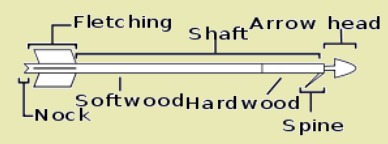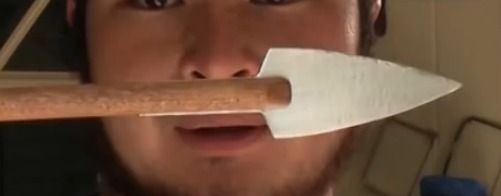Arrows and Darts
|
An arrow is a shafted projectile that is shot with a bow. It predates recorded history and is common to most cultures. An arrow usually consists of a shaft with an arrowhead attached to the front end, with fletchings and a nock at the other. Today, most arrows are between 28" and 36" in length with the mean being between 30-32". A bolt or quarrell is a projectile that is fired from a crossbow. It too consists of a headed shaft and can also have fletching and a nock. A bolt is generally shorter than a normal arrow having a length between 24 and 30". A dart is shorter yet.
The Shaft is the primary structural element of the arrow, to which the other components are attached. Traditional arrow shafts are made from lightweight wood, bamboo or reeds, while modern shafts may be made from aluminium, carbon fibre reinforced plastic, or a combination of materials. The shaft can be composed of two differing woods. Softwood allows flexability while hardwood can give a more rigid structue to mount points. Fletching refers collectively to the fins or vanes, each of which individually is known as a fletch. Traditionally, the fletching consists of three matched half-feathers attached near the back of the arrow or dart's shaft that are equally spaced around its circumference. Four fletchings have also been used historically.
Today, modern plastics may be used instead. Fletches were traditionally attached with glue and silk thread, but with modern glues thread is no longer necessary unless the arrow is a reproduction of a medieval war arrow. The fletching is used to stabilize the arrow aerodynamically.
Feather fletches impart a natural spin on an arrow due to the rough and smooth sides of a feather and the natural curve, determined by which wing the feather came from. Vanes need to be placed at a slight angle to create the same effect, but all are there to impart stability to the projectile to ensure that the projectile does not tumble during flight. The Nock is a notch in the rearmost end of the arrow. It serves to keep the arrow in place on the string as the bow is being drawn. Nocks may be simple slots cut in the back of the arrow, or separate pieces made from wood, plastic, or horn that are then attached to the end of the arrow. Modern nocks, and traditional Turkish nocks, are often constructed so as to curve around the string or even pinch it slightly, so that the arrow is unlikely to slip off. In English it is common to say "nock an arrow" when one readies a shot. In Arab archery, there was the description of the use of "nockless arrows". In shooting at the enemies, either the Turks or the Persians, it was seen that the enemies would pick up the expended arrows and shoot them back at the Arabs. So they developed "nockless arrows", which would be useless to their foes. The bowstring would have a small ring that is tied onto the string at the proper point where the nock would normally be placed. The end of the arrow, rather than being slit for a nock, would be sharpened like an arrowhead, then the rear end of the arrow would be slipped into this ring and drawn and released as usual. Then the enemy could collect all the arrows they wanted, but they would be useless to them in shooting back. A piece of advice was in battle, to have several rings tied onto the bowstring in case one broke. Arrowheads may be attached to the shaft with a cap, a socketed tang, or inserted into a split in the shaft and held by a process called hafting.
Points attached with caps are simply slid snugly over the end of the shaft, or may be held on with glue.
Split-shaft construction involves splitting the arrow shaft lengthwise, inserting the arrowhead, and securing it using a ferrule, sinew, or wire. The phot above shows a plate broadhead prior to hafting.
|
| Arrowhead Types | |
| Bodkin |
 |
| Bodkin Round |
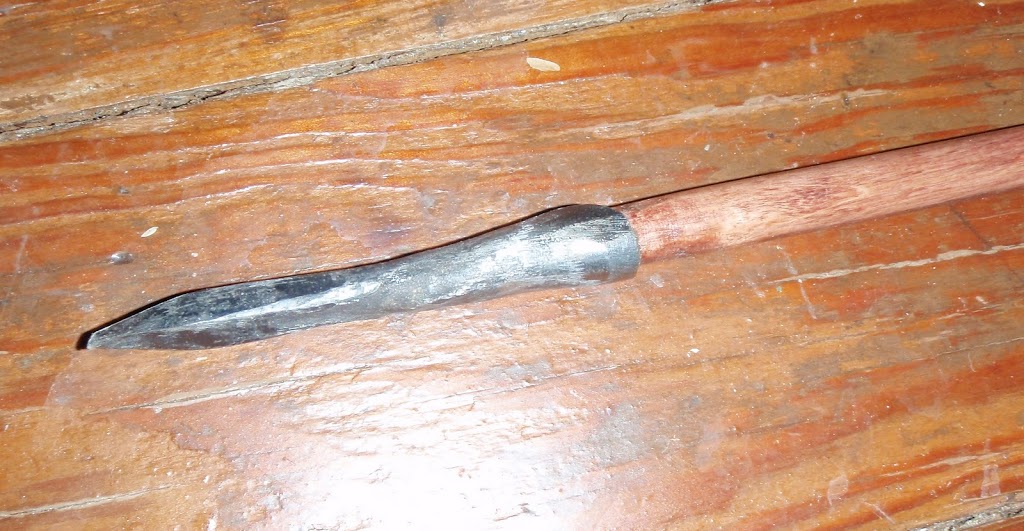 |
| Bodkin Squared off |
 |
| Bodkin Pyramidal |
 |
| Blunt |
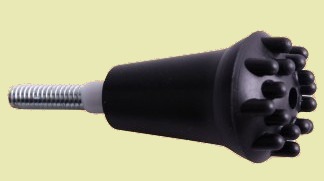 |
| Blunt |
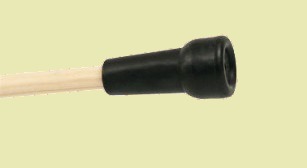 |
| Broadhead Fixed blade |
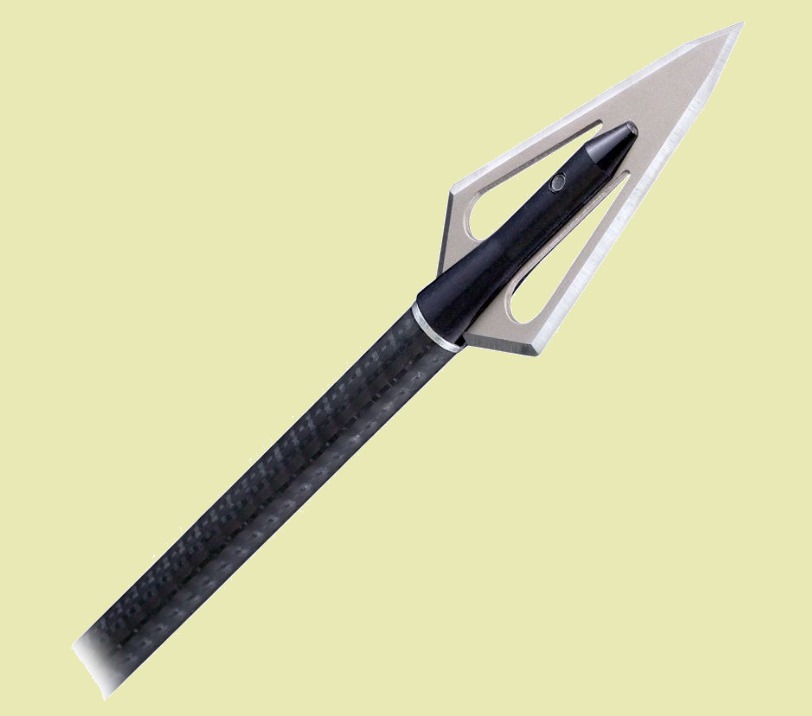 |
| Broadhead Tri-Bladed |
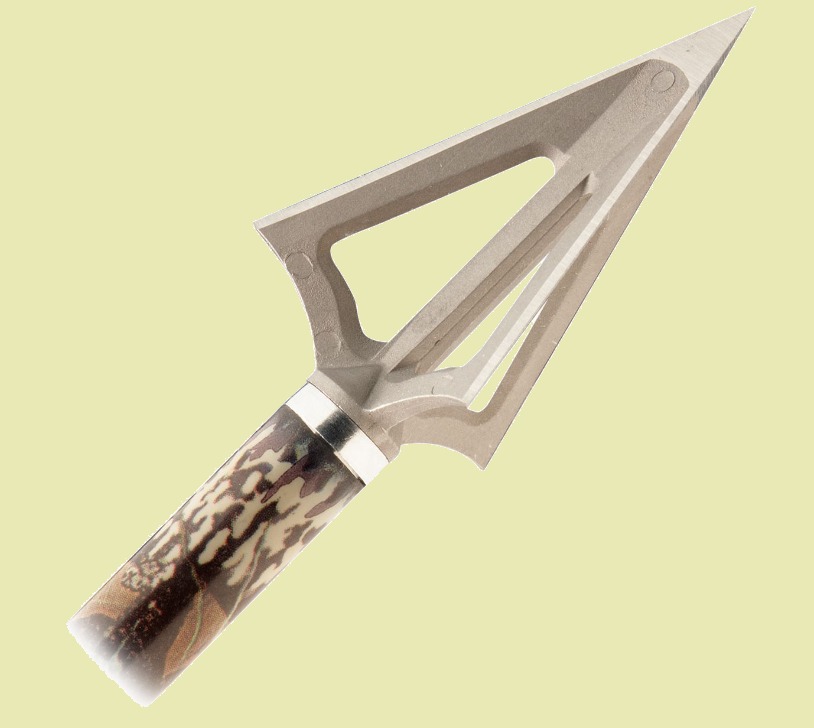 |
| Broadhead Large Saxon |
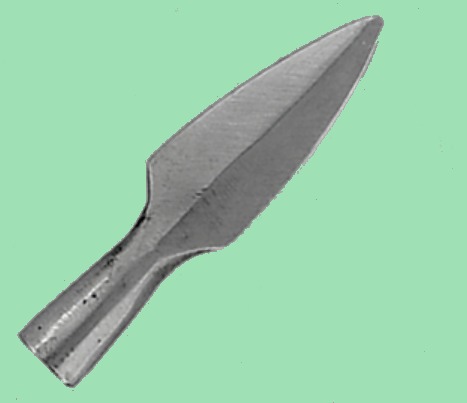 |
| Broadhead Modern |
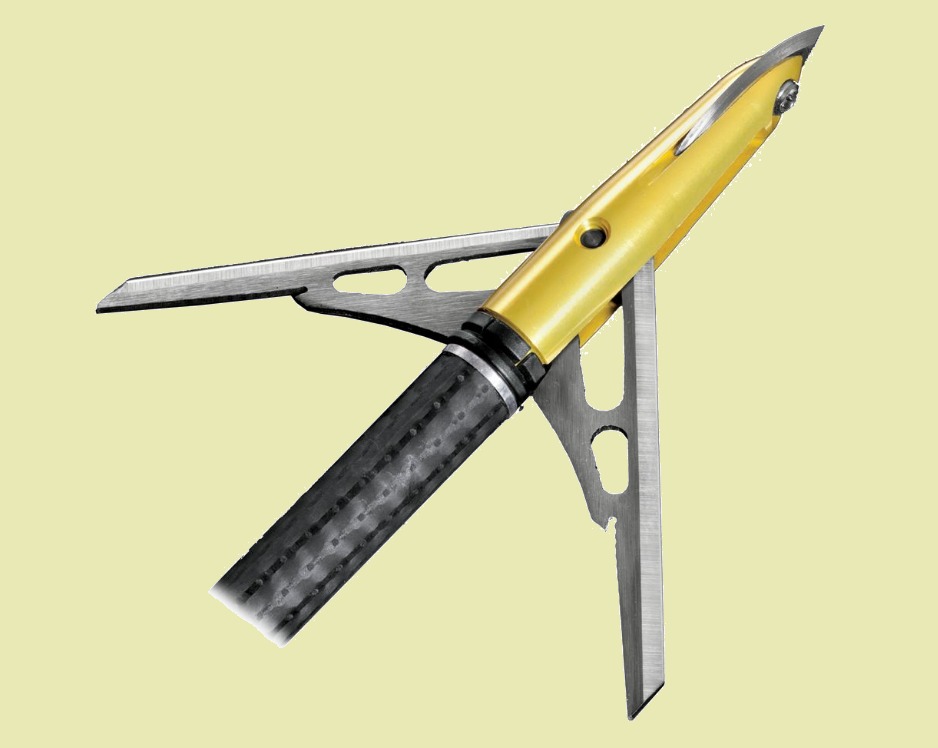 |
| Broadhead Deer Point |
 |
| Broadhead 'Warpoint' |
 |
| Broadhead Plate |
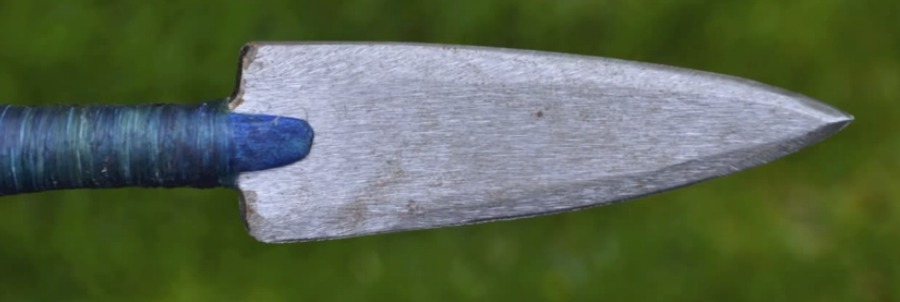 |
| Field Point |
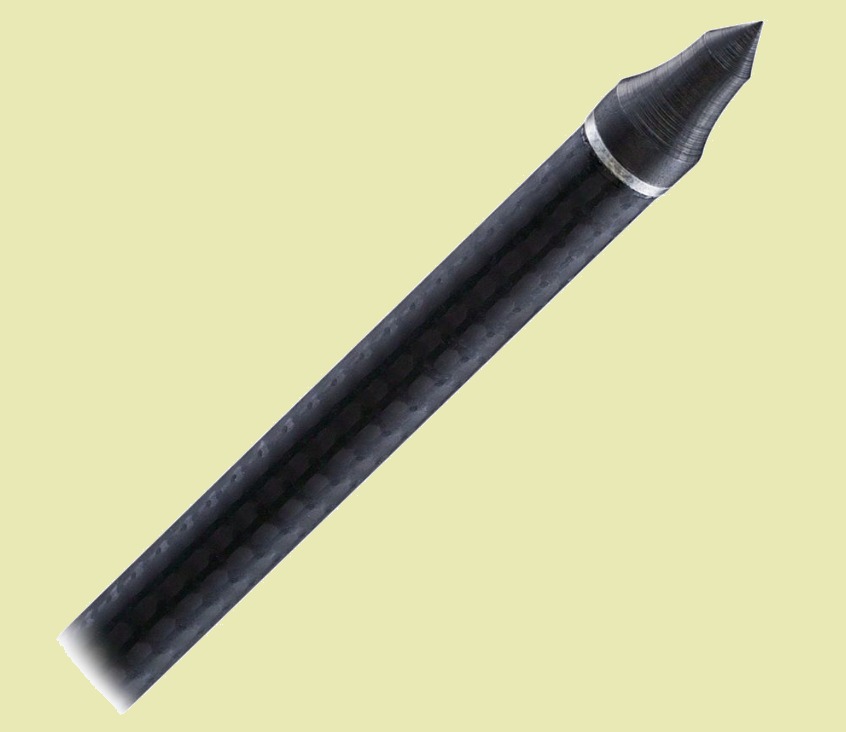 |
| Field Points |
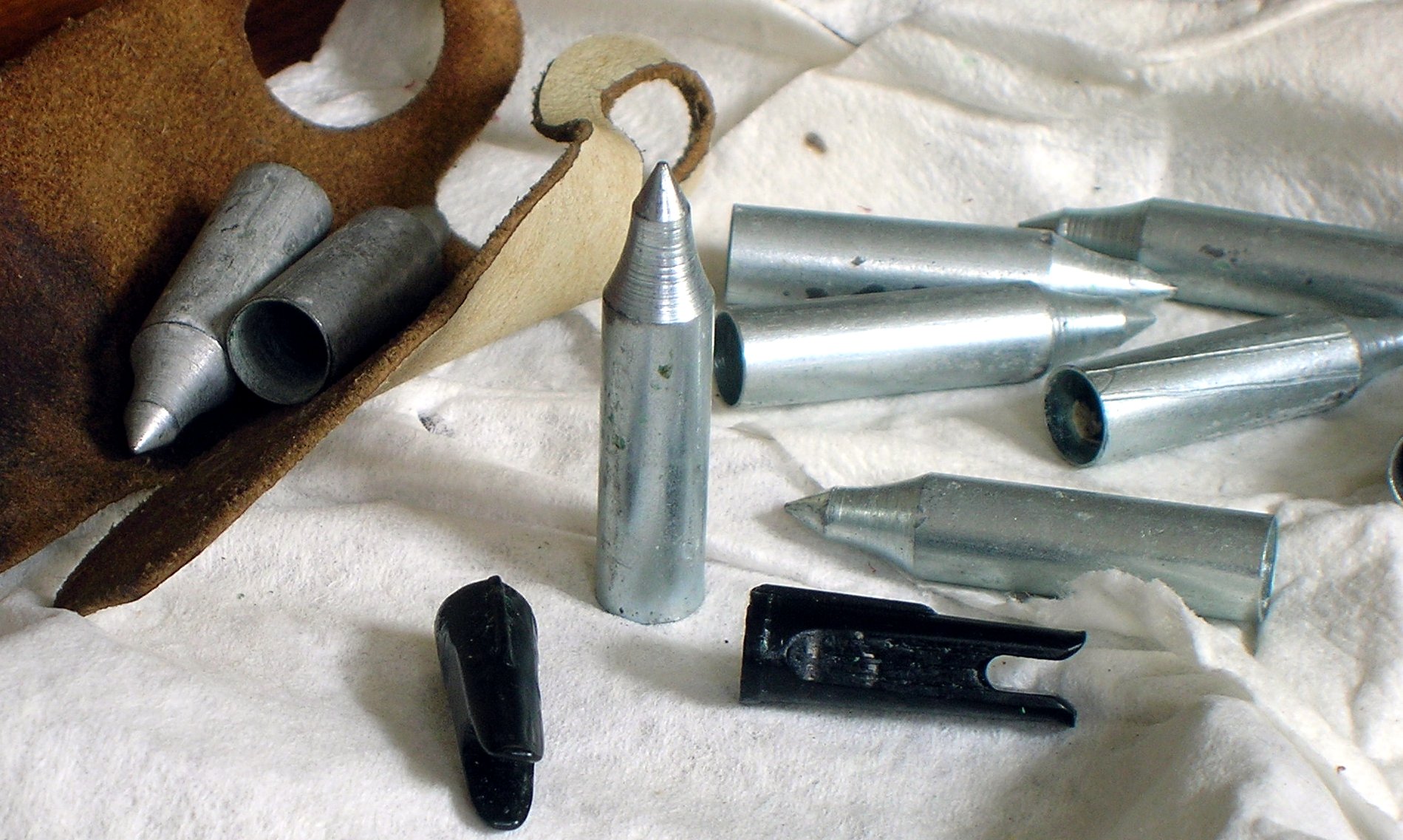 |
